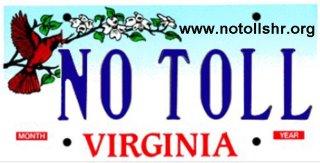Midtown Tunnel design missed Light Rail completely
posted on Sunday, April 29th, 2012 at 3:20 pm There is political momentum and apparently popular enthusiasm in the press for extending the Tide light rail to the resort area of Virginia Beach. I am anxious to vote my support for that project. I consider the light rail proponents to be cultural visionaries for the future of the whole of Hampton Roads.
There is political momentum and apparently popular enthusiasm in the press for extending the Tide light rail to the resort area of Virginia Beach. I am anxious to vote my support for that project. I consider the light rail proponents to be cultural visionaries for the future of the whole of Hampton Roads.
It takes a somewhat bigger view of the future to see the broad opportunities that light rail could have in the future of Hampton Roads, beyond the extension to the Beach. The bigger view was brought home to me upon attending an event sponsored by DBIA, Hampton Roads chapter of the Design Build Institute of America. The March 2012 presentation was conducted by the engineers responsible for the construction design of the new Midtown Tunnel.
The technical engineering expertise provided in the presentation was brilliant, but there is a doubt about this project that pervades anytime the project is mentioned, regardless of the circle. The voices of municipal leadership when speaking about the pending imposition of tolls is with gritted teeth, “we have to accept it.” No one can recall how public comment was invited into the deliberation of the merits of this project, certainly not Portsmouth citizens: Would you like another midtown tunnel? …by the way it will come with a nearly $2 toll each way.
The future impact of this project is clouded. The EZpass toll collection mechanism is fraught with problems. As soon as the tunnel starts collecting the toll local drivers will avoid using it. The statistical overcrowded volume of traffic will suddenly be diminished. The cityscape of Portsmouth will be irreparably desecrated by the flyovers and ramp exchanges to reach 264. Portsmouth will be orphaned economically for the foreseeable future, perhaps until the VDOT decision makers initiate tolling all the bridges and byways to mitigate the isolation of Portsmouth.
There is a better idea to solve this dilemma, compelling logic of a different course of action, other than a new Midtown tunnel, that would strengthen the cultural integration of the region and at the same time relieve the traffic congestion in the existing midtown tunnel. The DBIA event of last month was concluded by questions from an audience of more than a hundred planners, architects, engineers and interested professionals. The last question of the presentation was: Did you consider adding a light rail line to fit into the new tunnel tube?
The speaker casually offered a solution to the omission of a light rail line in their midtown tunnel design by saying that it could easily be added at a later time, by a different kind of tube, at much less cost than trying to include it within the concrete tube that had been designed and funded. The profound dichotomy of this response may be the answer to the midtown tunnel dilemma. I propose that tax funds earmarked for the construction of the new concrete tunnel should be diverted to the “much less expensive” project adding a steel tube tunnel to extend light rail across the channel to Portsmouth. (The Tide currently ends a few thousand feet from the existing midtown tunnel entrance.)
I admit endorsement of light rail to Portsmouth takes some ponderous extrapolation of current passenger data to be a believer. (Virginia Beach is taking three years for a third party study to justify its extension.) For now, consider the intuitive logic of how light rail builds community neighborhood nodes at the station stops. The beauty and cultural vibrancy of an existing urban environment such as Portsmouth is renewed and reinforced by the architectural identity of becoming a destination place for light rail.
Consider the effect of what happens as the price of gasoline climbs steeper and steeper. Vehicle miles traveled are already plummeting. Independent economic choices are being made daily, toward more fuel efficient cars, combining trip purposes, and car pooling. Project our $4 per gallon gasoline to $12 per gallon (the current price of gasoline in Copenhagen) and what happens? Light rail and buses and bicycles become important alternatives to driving the household car. The midtown tunnel project should be evaluated in a 100-year time horizon for its cultural impact, just as we commonly do for designing for a 100-year flood plane for public safety.
As one focuses on a picture a future with much less car driving we begin to see changing urban settlement patterns toward higher density urban living (more dwelling units per acre) where lifestyles move toward neighborhood walking to shop, for entertainment, to recreate and to use public transportation. Fixed transit routes such as light rail are the preferred means of mass transportation. This future vision is much healthier since we walk more regularly, the air is cleaner, and it is also much friendlier since we are interacting with other passersby at closer proximity on a daily basis.
When you can find this vision of the future an attractive alternative to making greater and greater capital improvement investment in accommodating the almighty automobile there is wisdom in scrapping the midtown tunnel project and swiftly switching our precious public funds into a much cheaper light rail tube across the midtown channel. All of the horrible unfairness of the tolls is eliminated. Vehicle traffic in the existing tunnel will diminish. The goals of regional integration of the separate municipal boundaries become less distinct.
I don’t want to imply that the Midtown extension of the light rail should take precedence over the project of bringing it to the resort area of Virginia Beach. We want both extensions. In fact, if the pot of gold that is available to pay for the new midtown tunnel was directly transferrable to pay for our light rail improvements it appears that there would be enough money to cover both extension projects.
Can we abandon the new Midtown Tunnel project at this point in time? The answer is: YES, of course. Engineers and architects do occasionally work on projects that are never built. Owners and end users do change their minds about following through with a design. The engineers get paid for their efforts and life goes on, hopefully for the better. There is a provision in the Midtown contract agreement that spells out the procedure for project termination.
This last minute rethinking is not really the last minute but it is an opportune decision point. Among the objectives spelled out in the DESIGN-BUILD CONTRACT with Skanska (SKW Contractors), December 5, 2011, the Midtown Tunnel project was supposed to: Increase transit service between Portsmouth and Norfolk. This exact language was spelled out in the agreement under the heading KEY COMPONENTS OF THE PROJECT. Needless to say the project we are getting fails categorically on this component. There is still time to save the day.
PS – I wrote this article a month ago and sent it to Virginian Pilot “letters to the editor”.
Tags: Hampton Roads, Light Rail, Midtown Tunnel, new urbanism, notollshr, Portsmouth


